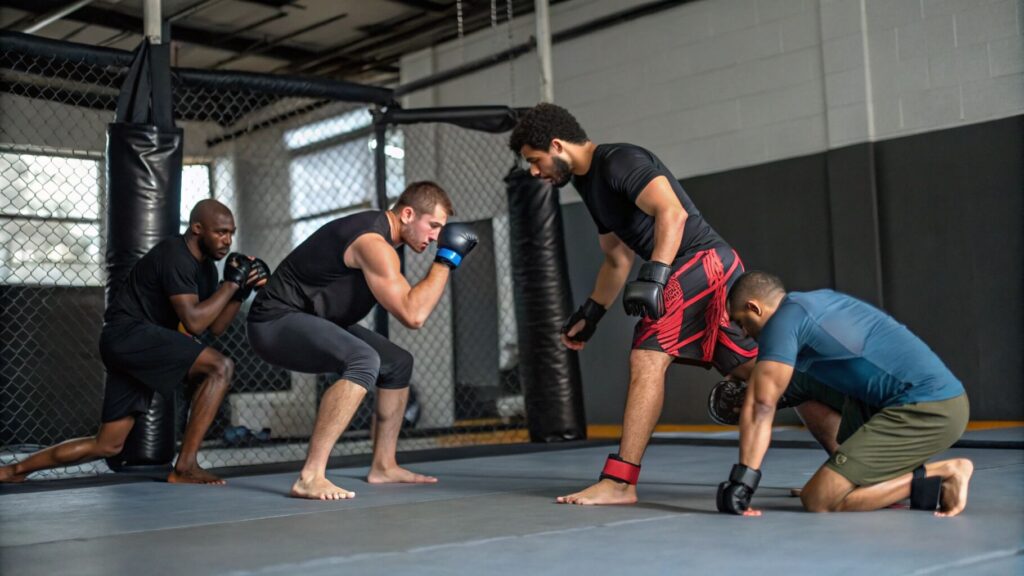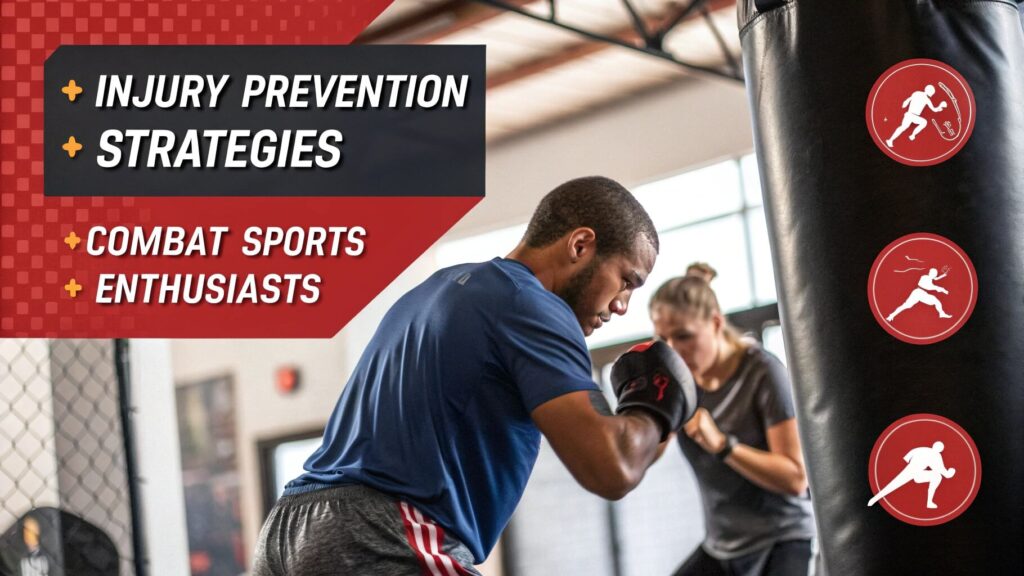There’s nothing quite like the surge of combat sports, whether your preferred sport is boxing, grappling on the mats, or Muay Thai while you hone your kicks. To be honest, great power comes with great responsibility, and part of that responsibility is to keep yourself free from injuries so you can continue doing what you love.
We’re delving into five key injury prevention techniques today that every fan of combat sports should have at hand. These are useful, tested strategies that can make all the difference between a long, successful training path and one cut short by avoidable injuries; they are not just theoretical ideas.
First Strategy: Learn the Art of Correct Warm-Up and Cool-Down
Consider your body as a high-performance vehicle; you wouldn’t run the engine without first letting it warm up, would you? Training in combat sports follows the same guiding idea. Though it’s usually the most disregarded element of training, a thorough warm-up is your first line of protection against injury.
Your warm-up should be a slow process that gets your body ready for the heavy demands ahead.
- Starting with light cardio, raise your heart rate and blood flow to your muscles. A mild jog around the gym or some light skipping, not too strenuous, should be enough to get the blood flowing.
- Use dynamic stretching to replicate the motions you’ll be doing in training. The particular muscle groups you will be using are activated by leg swings, arm circles, hip rotations, and light shadowboxing.
Though often overlooked when we’re eager to get to the showers, the cool-down is equally vital. While your muscles are still warm, your cool-down should include stationary stretching, focusing on the main muscle groups you just worked on. This increases flexibility, helps with recovery, and lessens muscle soreness. Spend ten to fifteen minutes properly cooling down; your future self will thank you.
Second Strategy: Perfect Your Technique Before Raising Intensity
This is a truth that might sting a little: ego has harmed more athletes in combat sports than any opponent ever could. Attempting advanced techniques, increasing speed, or intensifying strikes before mastering the fundamentals is a guaranteed path to failure. Whether you are honing your striking combinations or learning the complex ground game of jujutsu martial arts, technique always comes before force and speed.
When learning new skills, it is advisable to resist the urge to immediately proceed at full speed. Work with seasoned training partners who can offer regulated resistance and comments. Before progressively raising intensity, first concentrate on excellent form, timing, and posture. Remember, repeated accurate movements develop muscle memory, not hurried attempts at amazing techniques.
This method is about developing a better martial artist rather than only injury prevention. Correct technique is far safer, more efficient, and more effective than depending just on raw power or speed. Spend some time carefully and slowly drilling motions, focusing on every element of body posture and movement technique.
Strategy 3: Give Recovery Top Priority and Listen to Your Body
Your body sends signals all the time; injury prevention depends on your learning to interpret these signals. Your body is telling you something needs attention; that nagging ache in your shoulder, the ongoing soreness in your hip, or the unusual tiredness you are feeling are not only little annoyances to overcome.
Recovering is a basic element of athletic performance; it is not a sign of weakness. This covers getting enough sleep, during which your body repairs and rebuilds muscle tissue. Try for seven to nine hours of quality sleep every night; never undervalue the importance of rest days in your training plan.
Additionally, very helpful is active recovery. Without adding extra strain to your body, light activities including swimming, yoga, or mild walks help keep mobility and blood flow. If you have ongoing pain or discomfort, don’t hesitate to visit your local medical centre for a correct assessment or seek professional advice from a sports medicine practitioner.
Prevention of injuries and recovery also depend critically on nutrition. Make sure you’re getting the vitamins and minerals your body needs to run at its best, staying adequately hydrated, and consuming enough protein for muscle repair. Think about consulting a sports nutritionist knowledgeable in the demands of combat sports.
Strategy 4: Make Investments In and Maintain Proper Quality Protective Gear

Your protective gear, like any other armour, is only effective if it fits correctly, is well-maintained, and meets your specific needs. You don’t want to cut corners in this area or make do with mismatched hand-me-downs.
Start with the basics: not a generic one-size-fits-all solution; rather, a well-fitting mouthguard tailored especially for combat sports. Since a quality mouthguard absorbs some of the impact from strikes to the jaw, it can help lower the risk of concussion even if your teeth are irreplaceable.
Gloves and hand wraps especially call for attention. Learn proper hand-wrapping techniques to guard your fingers, knuckles, and wrists from striking’s repeated impact. Replace worn-out equipment often; those gloves losing their padding or hand wraps stretched beyond usefulness are not helping you anymore.
Make sure your training equipment for grappling arts is undamaged and fits correctly. While damaged gear might fail when you most need it, loose clothing can get caught and lead to injuries. Not only for hygienic purposes but also to guarantee it keeps sufficient protection, keep your gear clean and well-maintained.
Strategy 5: Train Smart Using Cross-Training and Progressive Overload
Smart training is about working with rather than against the natural adaptation mechanisms of your body. Progressive overload, or progressively raising the demands placed on your body over time, lets you steadily improve while lowering injury risk. This relates not only to strength training but also to all facets of development in combat sports.
If you’ve never sparred before, begin with modest, under-control sessions, then work towards more aggressive exchanges. If you’re working on conditioning, progressively raise the volume and intensity of your workouts instead of starting straight into advanced routines. Your body takes time to adjust to new stresses; rushing this process is one of the fastest ways to find yourself hurt.
Athletes in combat sports may find significant benefit from cross-training. Including swimming, cycling, or rock climbing will increase your general fitness and provide a break from continuous strain for your main training muscles. Correctly done strength training can help balance muscles and increase your general endurance.
Flexibility and mobility exercises should be part of your routine, not just when you’re hurt. Regular yoga classes, focused stretching exercises, or mobility work can help preserve joint condition and lower damage risk.
In Essence, Your Long-Term Success Depends on Wise Training Right Now
Excellent benefits come from combat sports: better fitness, self-confidence, stress release, and a community of like-minded people. These advantages, though, only become available if you remain healthy and free of injuries. The techniques we have covered are not only recommendations; they are fundamental habits that distinguish effective long-term practitioners from those whose paths are cut short by avoidable injuries.
Preventing injuries is about ensuring you can keep following your passion for years to come, not only about avoiding momentary pain. Every day you make investments in your long-term success and enjoyment of combat sports in appropriate preparation, technique refinement, recovery, and smart training practices.

